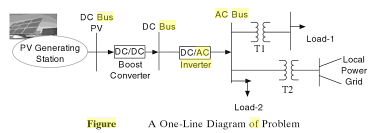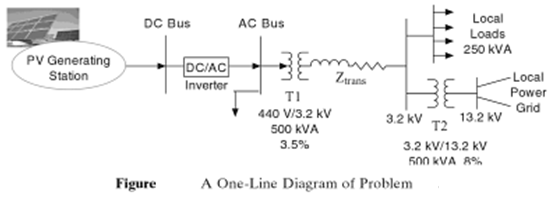Reference no: EM13799270
Question 1- Consider the microgrid of Figure. Assume the inverter AC bus voltage of 240 V and transformer T1 is rated 5% impedance, 240 V/120 V and 150 kVA. The transformer T2 is rated at 10% impedance, 240 V/3.2 kV and 500 kVA. The local loads are rated at 100 kVA and a power factor of 0.9 lagging. The inverter modulation index is 0.9. Compute the following:

i) The DC bus voltage and inverter rating
ii) The boost converter PV bus input voltage and input current ratings for the required DC bus voltage of the inverter
iii) The size of the microgrid PV station
iv) The per unit model of the microgrid
Question 2- Consider the microgrid of Figure. A three-phase 500 kVA, 440/ 3.2 kV transformer with the per unit reactance of 3.5% feeds from an AC source of a PV generating station. The distribution line is 10 miles long and has a series impedance of 0.01 +10.09 SE per mile. The local load is 250 kVA. Balance of power can be injected into the local utility using a 3.2/ 13.2 kV transformer and with the per unit reactance of 8%. Assume the voltage base of 13.8 kV on the local power grid side. kVA base of 500, and the DC bus voltage of 800 V.

Compute the following:
i) The inverter and the PV generating station ratings
ii) The per unit impedance diagram of the microgrid
Question 3- Consider the microgrid of Figure and the data of question 2. The local power grid net input reactance can be approximated as 9% based on the voltage base of 13.2 kV and 500 kVA base. Assume DC bus voltage of 880 V.
Compute the following:
i) The inverter modulation index and inverter rating
ii) The short-circuit current of AC bus if a three-phase short-circuit occurs on the AC bus of the inverter; ignore the PV station fault current contribution
iii) The same as part (i), except assume that the internal reactance of PV generating station and its inverter can be approximated as 1 per unit based on inverter rating.